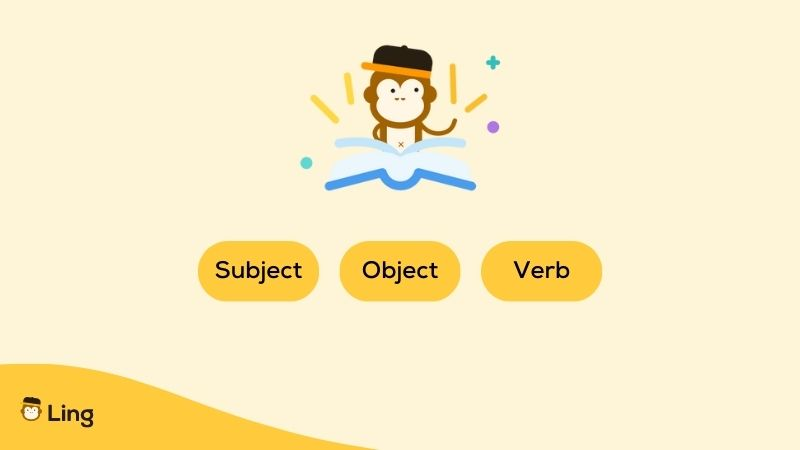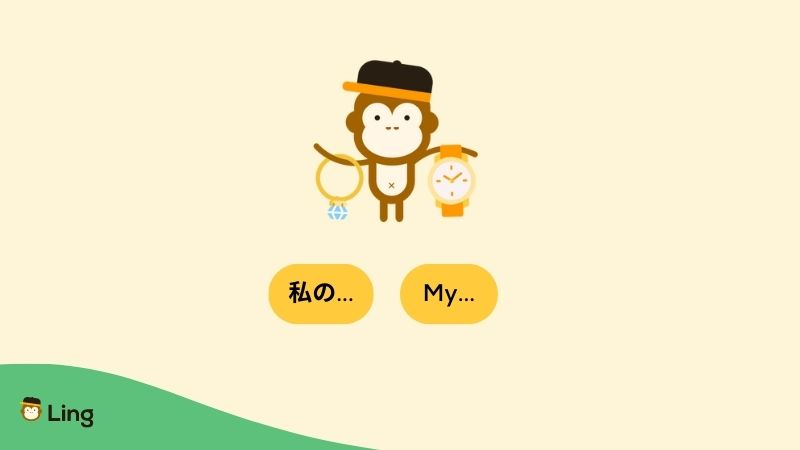If you are amazed by the allure of Japan or Japanese culture, you probably want to learn the Japanese language by now – been there, done that! Japanese can be quite complex, especially because it consists of three different writing systems with various rules to comply with.
Though it may seem hard at first glance, understanding Japanese grammar is an essential milestone. In this article, we will break down the key points of Japanese grammar rules, from basic sentence structure to Japanese particles.
Japanese Grammar Overview
While Japanese grammar has unique features, complexity is subjective. Embracing the differences can lead to a deeper appreciation of both languages. If you wonder whether learning Japanese is difficult, we have another blog article about it!

Japanese Sentence Structure
Japanese sentence structure, also called word order, differs from English and may take some practice to get used to. In English, the basic sentence order is subject–verb–object, for instance, “I play sports.” However, in Japanese, the order is Subject – Object – Verb e.g., 私はスポーツをします (Watashi wa supōtsu o shimasu).
Additionally, in Japanese sentences, various elements like location, time, or prepositions can be placed anywhere as long as they are marked with the correct particle, and the verb remains at the end.
Japanese Verb Tenses And Verb Classes
While English primarily has three basic verb tenses: past, present, and future verb tenses, Japanese has two basic verb tenses: present and past tenses. To indicate the future tense in Japanese, you add a time expression to the sentence. For example, 大学に行きます (Daigaku ni ikimasu) could mean “I go to college” or “I will go to college,” depending on context and time indicators.
Interestingly, Japanese verbs do not change based on the performer of the action, unlike European languages. This simplifies verb conjugation in Japanese.
Did you know that there are only two irregular verbs in Japanese? And these verbs are する (suru) to do and 来る (kuru) to come.
Japanese Formal and Informal Speech
Formal Japanese, often used with -masu verb endings, like ikimasu (行きます – to go) and tabemasu (食べます – eat), is considered polite Japanese and can be used in various situations like talking to your seniors at work or people you don’t really know. Informal speech, on the other hand, uses the dictionary or infinite form of verbs like iku (行く – go) and taberu (食べる – eat), and is used to talk to friends and family.
Japanese Gender and Counters
Unlike some languages, Japanese nouns do not have gender distinctions. While counters exist to count objects, this topic can be complex and requires deeper study.
Japanese Verb Conjugation
Japanese verbs fall into different categories: Ru (る) verbs, U (う) verbs, and irregular verbs. Conjugation rules differ based on these categories. For る-verbs (e.g., taberu – 食べる, meaning eat), you drop る and add –ます (-masu) for formality. For う-verbs (e.g., iku – 行く, meaning go), you drop the final う and add –います (-imasu).
Forming Questions in Japanese
Questions in Japanese are formed by adding か (ka) to a formal sentence. Informally, raising intonation at the end suffices. Japanese sentences don’t usually use a question mark; the particle か serves this function. Informal written sentences, however, can use a Japanese period or kuten (句点).
Japanese Particles
Particles in Japanese mark a word’s function in a sentence. Common Japanese particles are は (wa), が (ga), and を (wo). は marks the subject, が emphasizes it, and を marks the direct object of a sentence.

Possessive Form In Japanese
In Japanese pronouns, the particle の (no, meaning of), connects nouns to indicate possession or modify nouns. For instance, 私の犬 (watashi no inu) means “my dog.”
Commonly Used Phrases In Japanese
These are the commonly used Japanese conjunctions and phrases that will transform your Japanese sentences from good to awesome. Plus, they help you sound more fluent. Let’s see what they are!
Because
The word から (kara) is used to explain situations and connect sentences with “because.” Adding から can make sentences more natural and explanatory.
There Is & There Isn’t
The pattern がいる / がある indicates existence. いる (iru) refers to living things, while ある (aru) is for non-living things. Adding negative forms creates “There isn’t” statements.
Let’s, Shall We Or Would You Like To
–ます (masu) verbs can be turned into “Let’s” statements by adding -mashou. Adding か (ka) makes it a question. The negative form –masen (ません) + ka is more polite and less presumptuous.

Want
To express wanting to do something, add -tai to the verb stem. For Japanese nouns, use noun + がほしい (ga hoshii).
And… And…
Use や (ya) to link nouns when giving an incomplete list of examples. For instance, バスケットボールや野球やサッカーをします (basukettobouru ya yakyuu ya sakka wo shimasu) means “I play basketball, baseball, soccer, etc.”
Plan To Do
Adding つもり (tsumori) to the informal verb form expresses future plans. For example, 映画を行くつもりです (eiga wo iku tsumori desu) means “I plan to go to the movies.”
Maybe, Probably And Only
多分 (tabun) means “maybe,” while でしょう (deshou) indicates probability. だけ (dake) means “only” and attaches to Japanese adjectives, verbs, or nouns.
There are other rules that you need to memorize and practice, such as knowing different Japanese onomatopoeia. Or words that sound the same but have different meanings, which are the Japanese homonyms. In conclusion, remember that mastering Japanese grammar takes time, but with consistent effort, you’ll become more comfortable using its unique structures and patterns.
So, keep practicing and enjoy your journey into the world of Japanese language and culture!
Start Learning Japanese With Ling!
Ling is a language-learning app that offers 60+ foreign languages, including Japanese.
With Ling, you can start learning Japanese from scratch by learning how to write Japanese characters. Then, you can learn real-life Japanese vocabulary and practice your speaking and listening skills thanks to Ling’s AI chatbot! So that you can develop not only vocabulary but also writing and pronunciation.
If you’re looking for an effective and fun app to learn Japanese, go ahead and download Ling from the App Store or Google Play now!
By the way, Ling has a great Japanese language blog where you can find informational articles covering every aspect of the Japanese language and culture.



































































